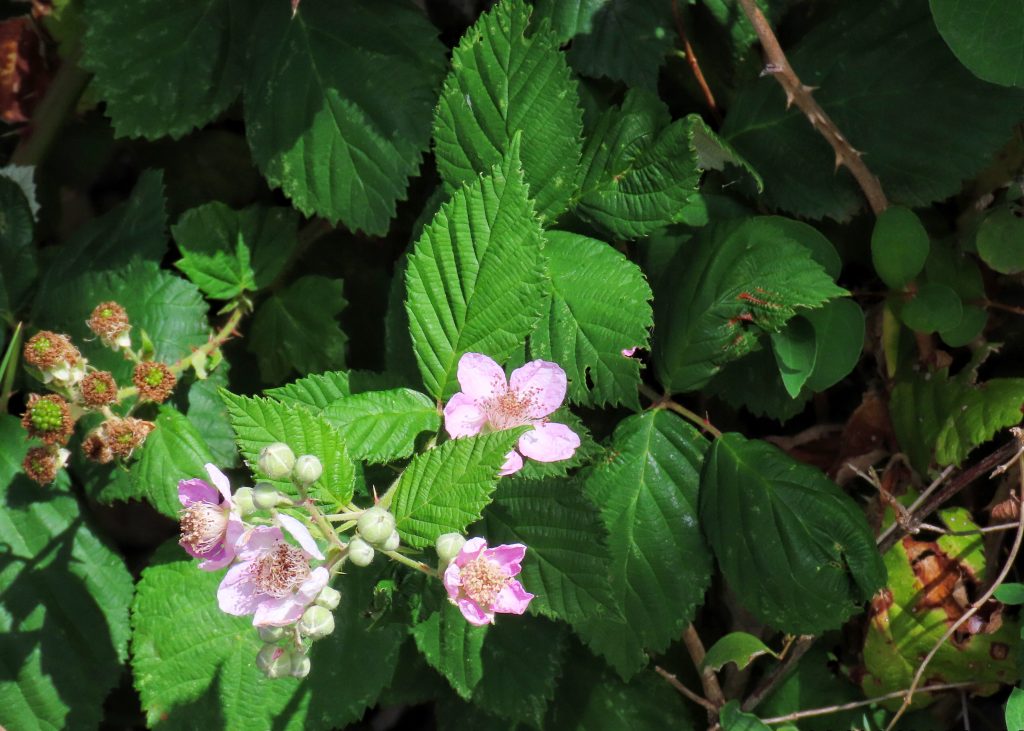
Anyone living in the PNW is probably all too familiar with the mounded and sharply thorned canes of the Himalayan Blackberry, as well as its delicious, albeit seedy, berries. It can be distinguished from the similar and also non-native R. laciniatus (Cut-leaved Blackberry) by its oval, toothed leaves with whitish undersides, since R. laciniatus has deeply lobed leaves with dark green undersides.
This is a wildly and persistently invasive species, due to its trailing vines producing ‘daughter’ plants, as well as far ranging dispersal of its seeds. As Tom Robbins said in “Still Life with Woodpecker”;
“Nothing, not mushrooms, not ferns, not moss, not melancholy, nothing grew more vigorously, more intractably in the Puget Sound rains than blackberries. Farmers had to bulldoze them out of their fields. Homeowners dug and chopped, and still they came back. Park attendants with flame throwers held them off at the gates.” Hyperbole, that, but not without a grain of truth.
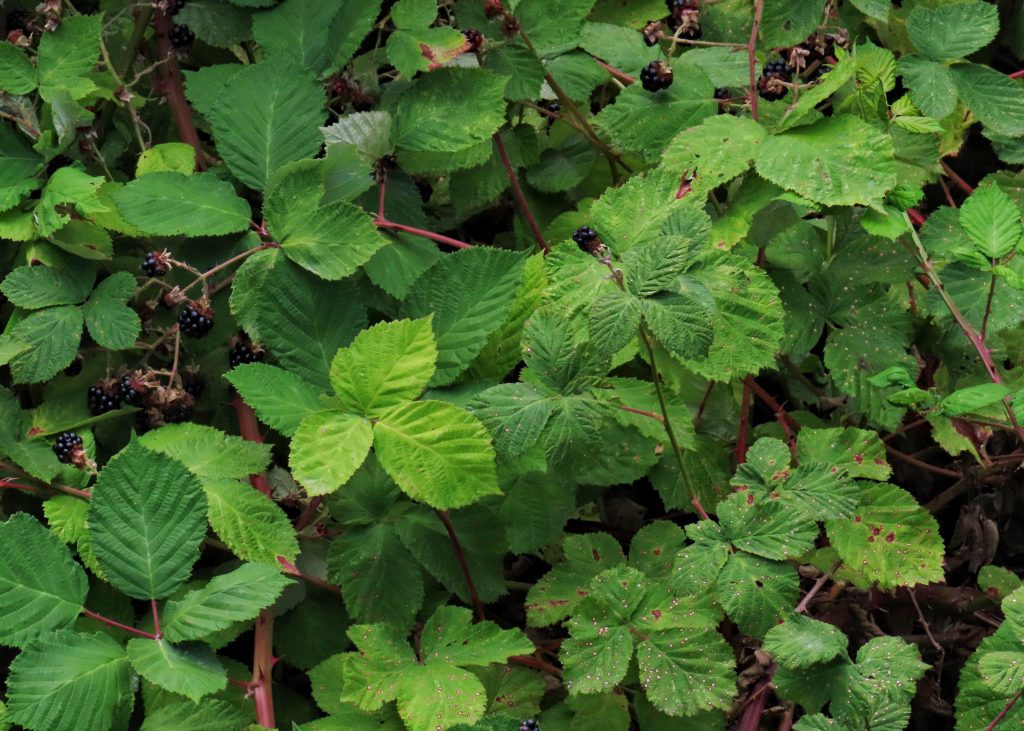
This species is not without its benefits, although they are probably not as great as a corresponding area of native plants would produce. However, in much of the disturbed ground, semi-urban places they inhabit, native plants are unlikely to find a toehold anyway, and Himalayan Blackberry produces far more food through nectar and berries, and much better small animal cover, than a corresponding field of other non-native, weedy species.
It is a larval host to the Geometrid moth Eupithecia misturata, the Noctuids Adelphagrotis stellaris, Graphiphora haruspica, and Hemigraphiphora plebeia, and the Tortricid Argyrotaenia citrana.
This plant has previously been known scientifically as R. armeniacus, R. discolor, and R. proxenus. According to “Flora of North America” (2014) the taxonomy is unsettled, and they tentatively settled on the much older name Rubus bifrons, though R. armeniacus may well end up with full species status of its own.
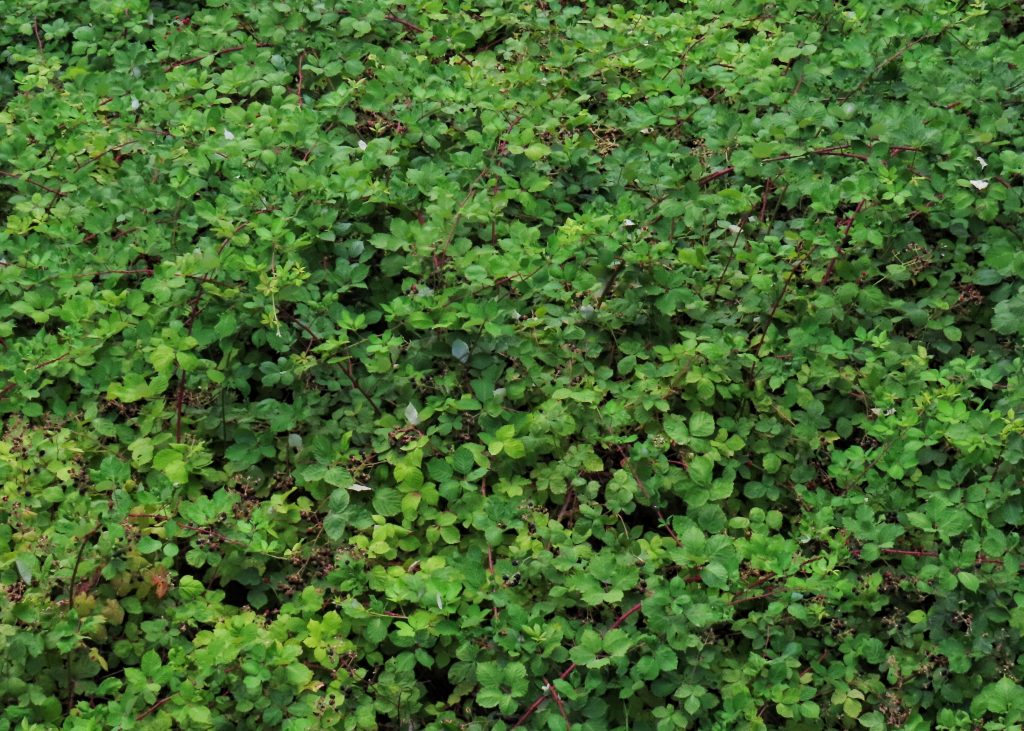
https://en.m.wikipedia.org/wiki/Rubus_armeniacus
https://ir.library.oregonstate.edu/downloads/3r074z36f
https://owlcation.com/stem/Himalayan-Blackberry-Plants-in-BC-Invasive-But-Beautiful
Size- Canes may be up to 30’ long
Habitat- Moist, disturbed ground
Range- Mostly west of the Cascades
Blooms- Late spring to mid summer
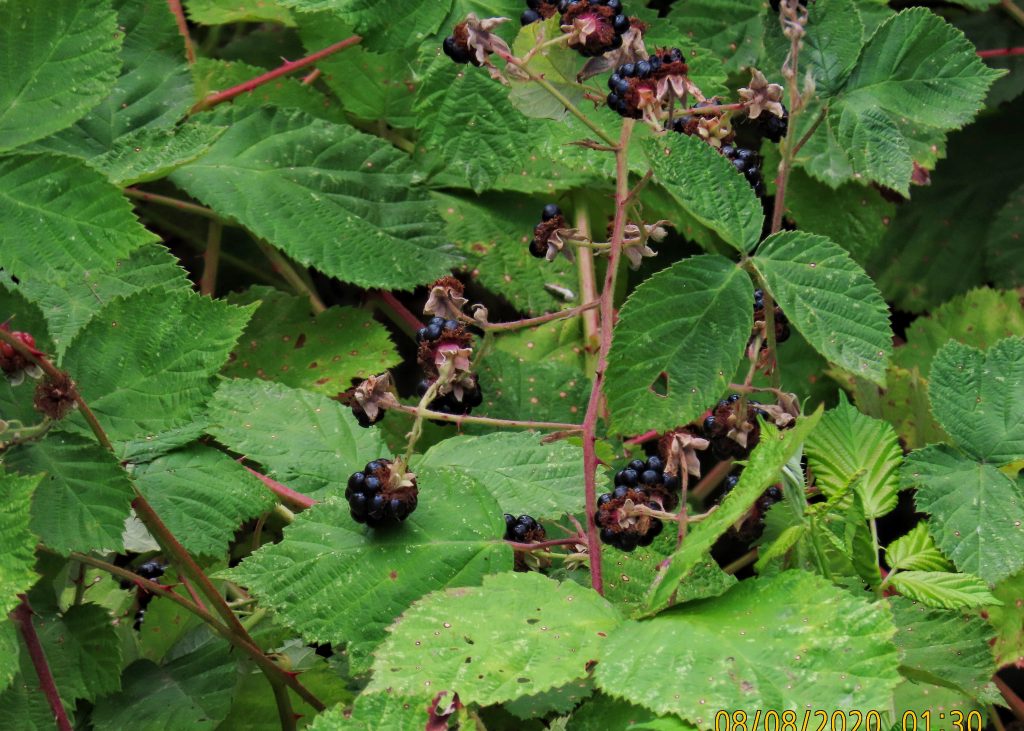
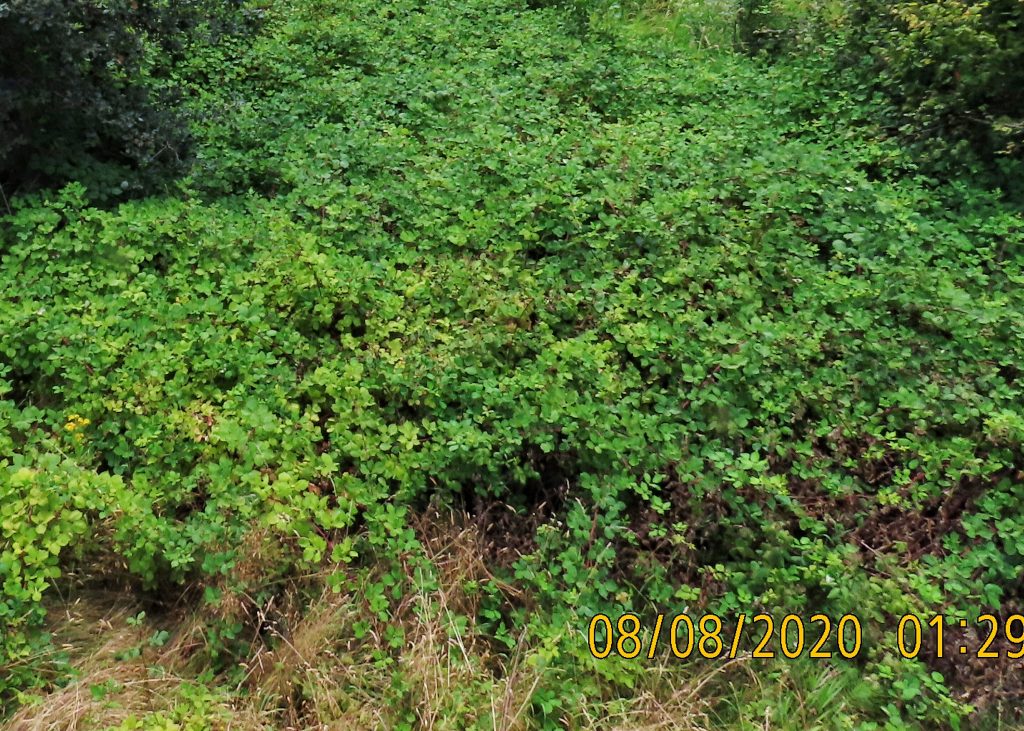
Glad to see this go public! Can’t wait for our next adventure (minus the drunken teenagers in pickups). 🤣